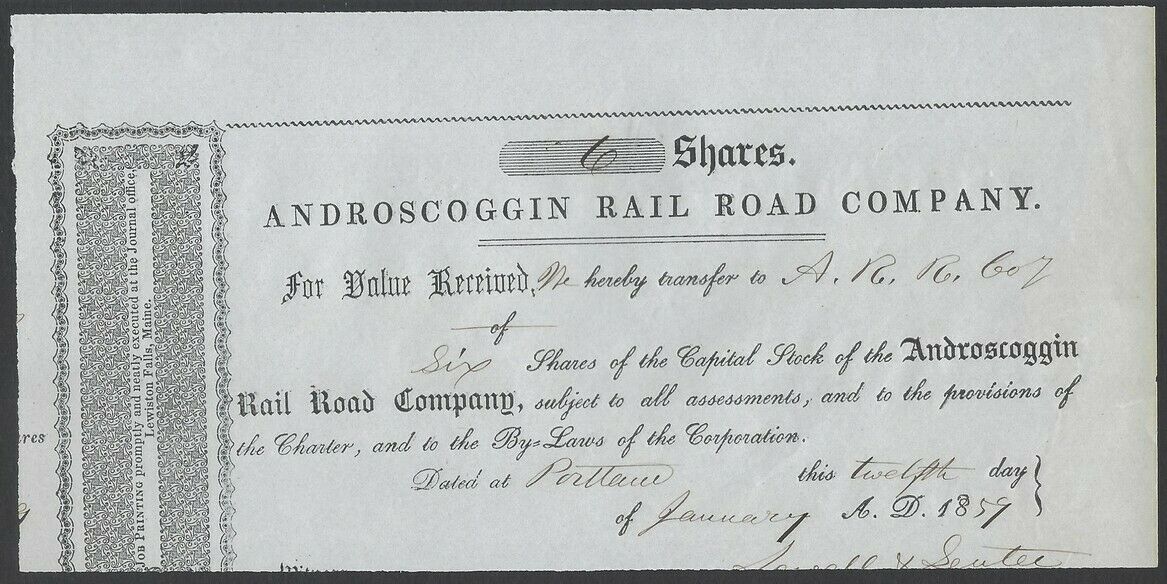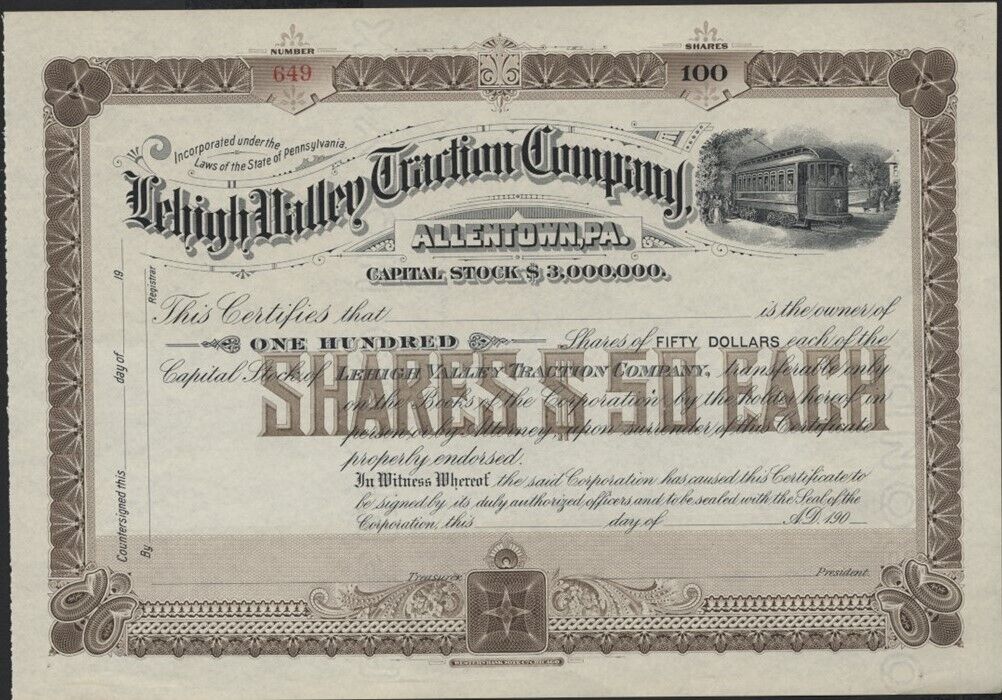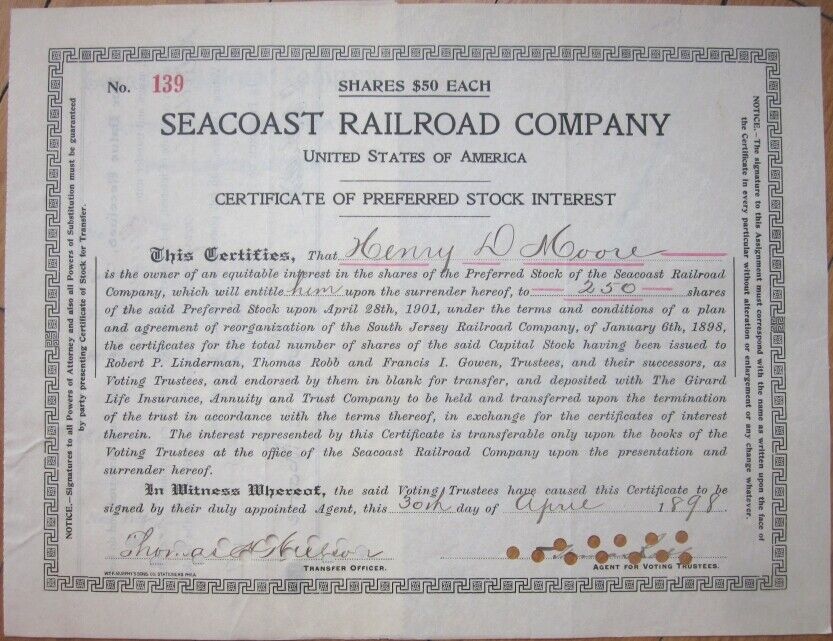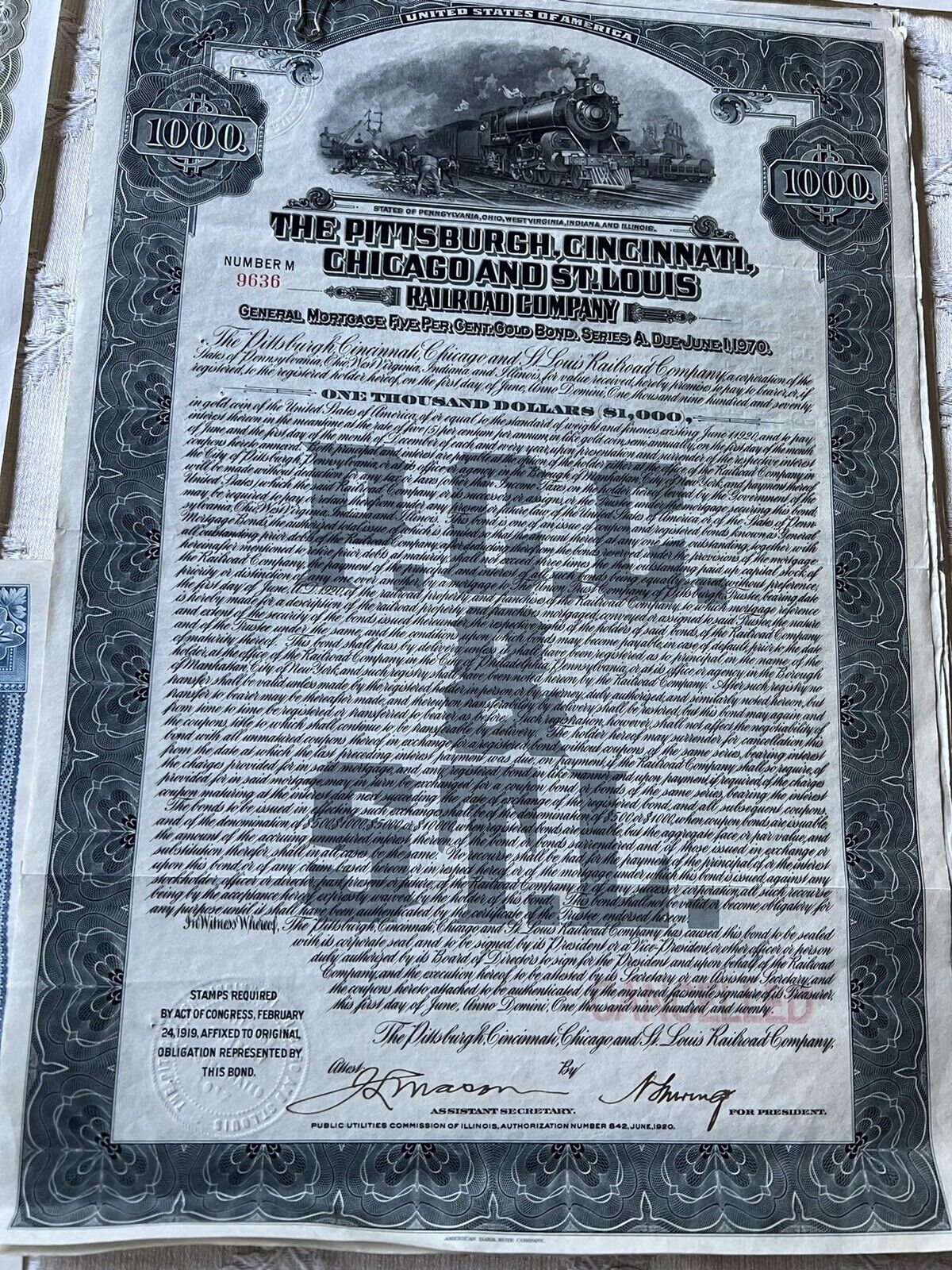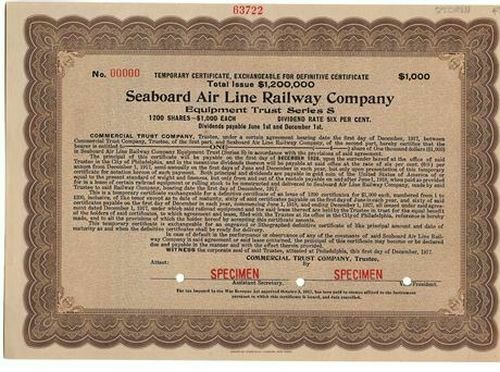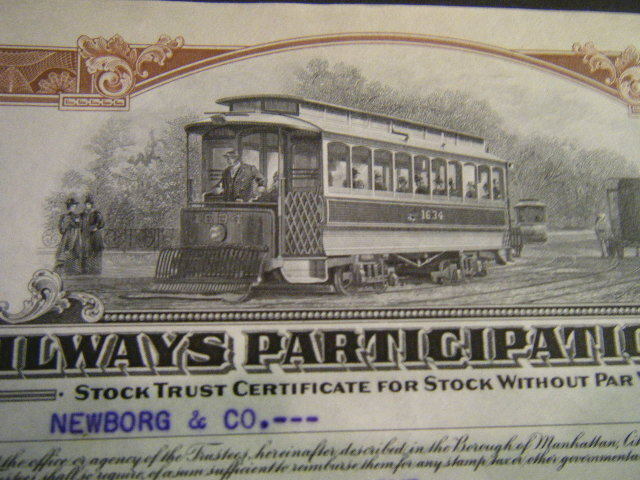-40%
Reading (Railroad) Company Bond Certificate
$ 3.69
- Description
- Size Guide
Description
Product DetailsIntricately engraved antique bond certificate from the Reading Company dating back to the 1940's, 1960's, 1970's and 1980's. This document, which is signed by the company President and Secretary, was printed by the American Bank Note Company, and measures approximately 9 3/4" (w) by 15 " (h).
This certificate's vignette features a pair of allegorical male figures flanking a Reading train with factories in the background.
Images
The images presented are representative of the piece(s) you will receive. When representative images are presented for one of our offerings, you will receive a certificate in similar condition as the one pictured; however dating, denomination, certificate number and issuance details may vary.
Historical Context
The Reading Company, usually called the Reading Railroad, and officially known as the Philadelphia and Reading Rail Road and then the Philadelphia and Reading Railway until 1924, operated in southeast Pennsylvania and neighboring states. Contrary to its spelling, it is actually pronounced 'redding'. Until the decline in anthracite loadings in the Coal Region after World War II, it was one of the most prosperous corporations in the United States. However, the reduced coal traffic, coupled with highway competition and short hauls, forced it into bankruptcy in the 1970s. The Reading Company's railroad was merged into Conrail in 1976, but the corporation lasted into 2000 disposing of real estate holdings.
Since the railroad served Atlantic City, New Jersey, Reading Railroad is also a property in the popular board game Monopoly.
History
The Philadelphia and Reading Rail Road was chartered April 4, 1833 to build a line between its namesake cities, Philadelphia and Reading, alongside the Schuylkill River. The part from Reading to Norristown opened July 16, 1838, and the full line opened December 9, 1839. Its Philadelphia terminus was at the state-owned Philadelphia and Columbia Railroad on the west side of the Schuylkill River, from which it ran east on the P&C over the Columbia Bridge and onto the city-owned City Railroad to a depot at the southeast corner of Broad and Cherry Streets.
An extension northwest from Reading to Mount Carbon, also on the Schuylkill River, opened on January 13, 1842, allowing the railroad to compete with the Schuylkill Canal. At Mount Carbon it connected with the earlier Mount Carbon Railroad, continuing through Pottsville to several mines, and would be extended to Williamsport. On May 17 of that year, a freight branch from West Falls to Port Richmond on the Delaware River north of downtown Philadelphia opened. Port Richmond later became a very large coal terminal.
On January 1, 1851 the Belmont Plane on the Philadelphia and Columbia Railroad, just west of the Reading's connection, was abandoned in favor of a new bypass, and the portion of the line east of it was sold to the Reading, the only company that would continue using the old route.
The Lebanon Valley Railroad was chartered in 1836 to build from Reading west to Harrisburg. The Reading took it over and began construction in 1854, opening the line in 1856. This gave the Reading a route from Philadelphia to Harrisburg, for the first time competing directly with the Pennsylvania Railroad, which would turn out to be its major rival.
In 1859 the Reading leased the Chester Valley Railroad, providing a branch from Bridgeport west to Downingtown. It had formerly been operated by the Philadelphia, Germantown and Norristown Railroad.
A new Philadelphia terminal opened on December 24, 1859 at Broad and Callowhill Streets, north of the old one at Cherry Street.
The Reading and Columbia Railroad was chartered in 1857 to build from Reading southwest to Columbia on the Susquehanna River. It opened in 1864, using the Lebanon Valley Railroad from Sinking Spring east to Reading. The Reading leased it in 1870.
The Port Kennedy Railroad, a short branch to quarries at Port Kennedy, was leased in 1870. Also that year, the Reading leased the Pickering Valley Railroad, a branch running west from Phoenixville to Byers, which opened in 1871.
The Reading leased the North Pennsylvania Railroad on May 14, 1879. This gave it not only a line from Philadelphia north to Bethlehem but the valuable Delaware and Bound Brook Railroad, the descendant of the National Railway project, giving it a route to New York City in direct competition with the Pennsylvania Railroad's United New Jersey Railroad and Canal Company. On the New York end it used the Central Railroad of New Jersey's Jersey City terminal.
On May 29, 1883 the Reading leased the Central Railroad of New Jersey. The Reading eventually bought up a majority of the CNJ's stock as well.
The Port Reading Railroad was chartered in 1890 and opened in 1892, running east off a junction from the New York mainline near Bound Brook to a new port - Port Reading - on the Arthur Kill near Perth Amboy.
The Lehigh Valley Railroad was leased on December 1, 1891 under the presidency of Archibald A. McLeod, but that lease was cancelled on August 8, 1893 when the Reading went into receivership. Towards the turn of the century, to ward off government efforts to break up monopolies the Pennsylvania & Reading owners created a new holding company named the Reading Company. The Pennsylvania & Reading Railroad and Pennsylvania Reading Coal & Iron were ordered separated under a Supreme Court ruling, and on New Year’s Eve 1923, the Pennsylvania Reading Coal and Iron became an independent line and Reading Railroad became the operating name.
The Reading Lines
On December 31, 1923, the Reading Company was separated from the Philadelphia & Reading Coal & Iron Company, forming what most people today think of as the Reading Lines. The components of the eventual railroad were
Atlantic City RR
Catasaqua and Fogelsville RR
The Gettysburg and Harrisburg Rwy
The North East Pennsylvania RR
Perkiomen RR
The Philadelphia and Chester Valley RR
The
Philadelphia, Newtown, and New York RR
Pickering Valley RR
The Port Reading RR
Reading and Columbia RR
Stony Creek RR
The Williams Valley RR
The Delaware River Ferry Co. of New Jersey
Philadelphia and Reading Rwy
The Chester and Delaware River RR
Middletown and Hummelstown RR
The Rupert and Bloomsburg RR
The Tamaqua, Hazleton and Northern RR
The Norristown Junction RR
The Philadelphia and Frankfurt RR
The Philadelphia, Harrisburg, and Pittsburgh RR
The Schuylkill and Lehigh RR
Shamokin, Sunbury and Lewisburg RR
New York Short Line RR
Norristown and Main Line
Connecting RR
Reading Belt RR
Bankruptcy
The Reading Company was forced to file for bankruptcy protection in 1971. The bankruptcy was a result of dwindling coal shipping revenues and strict government regulations that denied railroads the ability to set competitive prices, required high taxes, and forced the railroads to continue to operate money-losing lines. To further complicate matters, the Reading was forced to continue paying its debts to the Penn Central Railroad, however, Penn Central (also in bankruptcy at the time) was not required to pay its debts to the Reading Company.
Post Railroad
On April 1, 1976, the Reading Company sold its current railroad interests to the newly formed Consolidated Railroad Corporation (Conrail), leaving it with 650 real estate assets, some coal properties, and 52 abandoned rights-of-way. It had sold 350 of the real estate tracts by the time it left bankruptcy in 1980. In the early 1980s a Los Angeles lawyer named James Cotter gained control of the corporation through his holding company, the Craig Corporation, and liquidated the rest of its assets to finance his cinema chains in Australia and New Zealand. The company sold its last railroad-related asset, the Reading Terminal Headhouse, in 1993. In 1996 Cotter reorganized the company as Reading Entertainment. The Craig Corporation merged in 2001 with Citadel Holding Corporation, another Cotter company, and became Reading International, Inc.


